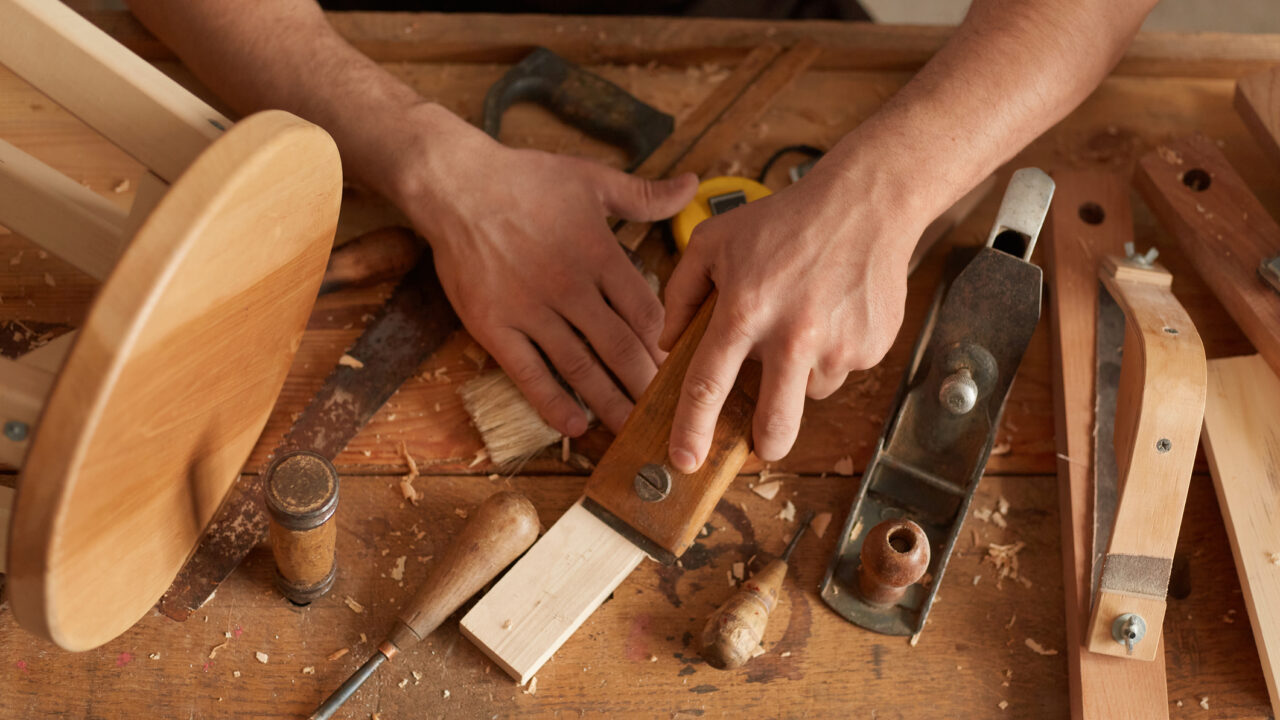If you haven’t been into a woodshop, there is usually only one word that captures the feeling for first-timers: overwhelming. To start your journey into woodworking is to learn from the jump that no two pieces of wood are the same, “there’s no such thing as straight”, and, critically, there is a right tool for every task. There is rarely a clear starting point and you’ll have to learn many things at once, sometimes things that will feel contradictory. My first few times taking classes actually reminded me of when I started organizing, but maybe that’s because I can’t help but see organizing everywhere.
So while this article isn’t about woodworking and is, like everything in my life, about political organizing, my brief and failed interlude in woodworking taught me a surprising amount about how to approach the daunting task of building and shaping political power. These were my lessons.
To belabor this metaphor from the jump, no two pieces of wood are the same and, similarly, no two campaigns are the same. When approaching the intimidating work of crafting a political message and building something out of the nothingness that is a fledgling issue or electoral campaign, you have to start by assessing your resources. Some resources are pliable and can be shaped. Some are rigid. Some resources need a treatment from the jump, a way to soften them to the point of being able to work with them, and some resources are turnkey.
This is why it’s so often the case that consultants fail from the moment they are brought onto a project. Not because they are bad at what they do but rather because consultants are not going to assess your resources individually. They don’t have time. They are a lumber mill and it is in their best interest to turn whatever your campaign might be into standard boards. Not a chair, a deck, or a house. You are one of tens of hundreds and while they might create the perception of professionalization by providing a finished product, they are not in the game of power building.
So, lesson number one, don’t bring in consulting firms to do an organizer’s job. Treat your resources like the precious and unique timber that they are.
The next lesson, and one that often requires layered thinking about the issues we approach: “there is no such thing as straight.” I guarantee that if you go to your nearest makerspace or hobbyist woodshop tomorrow and ask for a straight piece of wood there will be a 60 year old man in there, probably missing a thumb, that will laugh and repeat this line to you. They will explain that straightness is relative and that it’s basically unachievable. They will tell you that you can spend your whole life looking for a straight cut plank or planing and re-planing your lumber to no avail. You will always have to measure again and again, adjusting your strategy and measurements as you work through your building plan. It’s part of the joy of woodworking. You adjust to the unexpected. You learn, ultimately, to love the process or you pack up your piles of raw wood and go home.
But of course “straight” in our case applies not to the state of our lumber but the simplicity of the paths and tactics we choose to win. A good organizer, like a seasoned woodworker, knows there will never be a straight-forward or clean approach to confronting power. Those who believe there are, who believe in single paths with no deviation, have not been organizing long enough or have become self-satisfied with powerlessness.
Take the most recent example: our switch out of presidential democratic nominee. In hindsight you would be hard pressed to find a democratic operative anywhere, from the most progressive to the more moderate, who believe this switch was not necessary. The energy has changed dramatically, fundraising floodgates have blown open, social media accounts in support of Kamala Harris and Tim Walz are ballooning across the internet, and we’re left wondering why we didn’t make this change sooner”
So we must manage our expectations. Switching nominees was an unorthodox path and one that, at the time, felt too risky to take on. Allowing for flexibility and not bearing down on the “straight” and “predictable” path allowed us to open up pathways to the presidency that did not exist before. There is no such thing as straight, as they say, and we must build a tolerance to seeing beyond our comfort zones to the potential that lies beyond our best laid plans.
Which brings me finally to our tools or, in our case, tactics. Just as there is no moral association with building tools, your tactics should be vast and wide reaching. In the words of the journalist and satirist Molly Ivins, “you can use a hammer to build with or you can use a hammer to destroy with. There is nothing intrinsically good or evil about the hammer itself. It is the purposes to which it is put and the skill with which it is used that determine whether the hammer’s work is good or bad.”
A moderate tactic does not make you a moderate. An extreme tactic doesn’t make you an extremist. Tools and tactics are neutral and your disagreement with someone’s tactics does not, decidedly, mean they are not a part of your movement. We can disagree on efficacy. And yes, there will be tactics that cause more harm than good. But it does us no good to splinter the movement because someone is building power with a different tool.
Truly building power relies on doing what works best to get a tangible, not ideal, outcome. There is a tool for every job and depending on your resources you have to allocate your tools appropriately. Is deep canvassing the answer to every issue campaign? Is an op-ed the answer to every race you run? The answer is always yes and no. Asking the right questions is the first step to knowing what the right tools are.
To put a finer point on it, consider the current application, where a brief moment of Democratic alignment behind Vice President Harris quickly splintered in the face of the most pressing moral question of our time: the assault on Gaza. After the switch, a seasoned class of organizers quickly rallied around the Uncommitted movement and pursued the grinding work of organizing delegates and lobbying electeds; tediously building their case in the halls of congress and at the ballot box but vocal critics have sounded off. On the other side of this organizing there is a starry-eyed milieu of (mostly) online organizers asking, “what’s the point of it all anyway?” If they won’t listen to us, the thinking goes, the clear answer is to abandon all institutions that are unaligned.
They aren’t wrong to feel this way. But slow-moving tactics are a feature of organizing and not a bug. You don’t have to be an incrementalist to understand that change is as slow as it is necessary and the tactics we choose are, ultimately, not a statement of our values. And while this is not an article to tell you that there is no urgency in this moment or that voting solves all our issues or that uncommitted votes were our only option, I hope it’s clear that voting does matter and always will. There is a reason people gave their lives for the right to be part of a democracy. It is a tactic. It’s a tool. And it is by all measures a necessary one. You cannot build a house with warped planks. You cannot abandon the ballot box and expect revolutionary change. You cannot expect our paths to be straight and obvious. And you must assess all your resources to know what is possible to build.
We are all, ultimately, in the act of building. If you burn your most valuable tools, abandon a process at the first sign of trouble, and underestimate your own power, you cannot expect to build anything at all.

